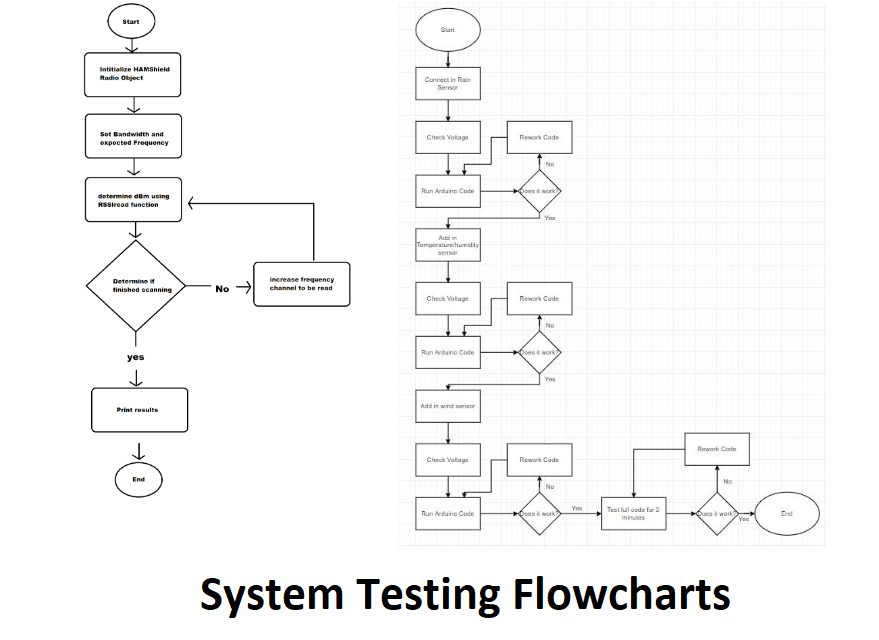Project Progress
The Site Weather and Power Recorder capstone project is currently using the
Gantt chart (figure shown below) to maintain our production progress. As of 1/29/21, which is in Week 6 of 17 in our Gantt chart, our team is currently on track with all expected progress. The project is broken down into
multiple components, with the majority of them being completed on schedule and are thus expected to be ready for the next stages of testing. The Power Recording component of the project is currently the
focus of the team as it needs to be prototyped further in order to maintain schedule.
The completed project testing is expected to began on 3/6/2021 and the build is needs to be completed by
3/27/2021(Week 14)

As of Friday, March 12th, our project is only behind schedule in one area, but our team fully expects to be able to meet our deadline. Our Gantt chart shows that our team should currently be testing the complete integrated project from March 6th to March 27th. The major influence that caused us to fall behind schedule was the SDR portion of our project. A late design change was required due to a requirement change that was implemented on February 26th. The design change required more research in order to select new parts to order, which took a few days to accomplish. Shipping is taking longer than expected, but the new parts have been ordered and delivery is expected before March 15th.
This change has delayed the SDR portion of our project by nearly four weeks when compared to the Gantt chart, but we are making up this time by continuing work and testing on other parts of the project. Our team is working on the software for the Hamshield so that when it arrives, testing can begin immediately. The weather station portion of the project is on schedule and integration testing is moving forward without the Hamshield, which will be integrated later on. This will allow the weather station to be completed ahead of schedule, which will allow our team to focus on getting the radio signal analyzer back on schedule. Our team has learned the importance of being flexible.
Things do not always go as planned but we need to be able to adapt and overcome obstacles such as design changes and shipping delays. We also have learned the importance of being able to alter our project timeline in a way so that when some modules of the project fall behind schedule, others will get ahead of schedule so that the deadline is still met. In the future, we will spend more time thoroughly analyzing and discussing the requirements to avoid the need for late design changes.
TESTING:
Our team has planned matrix testing on both our rain and temperature sensor, which matrix testing is where the inputs to the system are structurally the same and only differ in their value. For the rain sensor, the testing that our team has decided is to vary the amount of drops of water that go onto the rain sensor and depending on the amount of drops of water there is an expected value that the rain sensor will output. Then for the temperature sensor, the testing that our team has decided on is to change the temperature by 5 degrees celsius starting at 0 degrees celsius to 50 degrees celsius. Each increment of the temperature reading has a range in which the temperature is expected to be in. The other two tests that have been planned by our team are a step by step test for our power station and the integration test using the step by step method for the integration of our full weather station arduino code. Our team has decided to test the power station by starting out at 140 MHz for the radio signal and checking to see if there is power that is outputted by the power station, then incrementing the radio signal by 2 MHz and repeating this process all the way up to 172 MHz.
The final test that our team has decided on is the step by step integration test for the weather station code, this test will start by hooking up the first sensor, checking the voltage at the device, making sure the code will compile and upload to the arduino, and checking to make sure the data from the sensor gets outputted to the COM port. This process will be repeated with each additional sensor being added into the arduino until all three sensors are integrated into the arduino, and then finally the full integrated code will be run for 2 minutes to see if any type of error with the code or circuits may happen causing the weather station to stop working.
